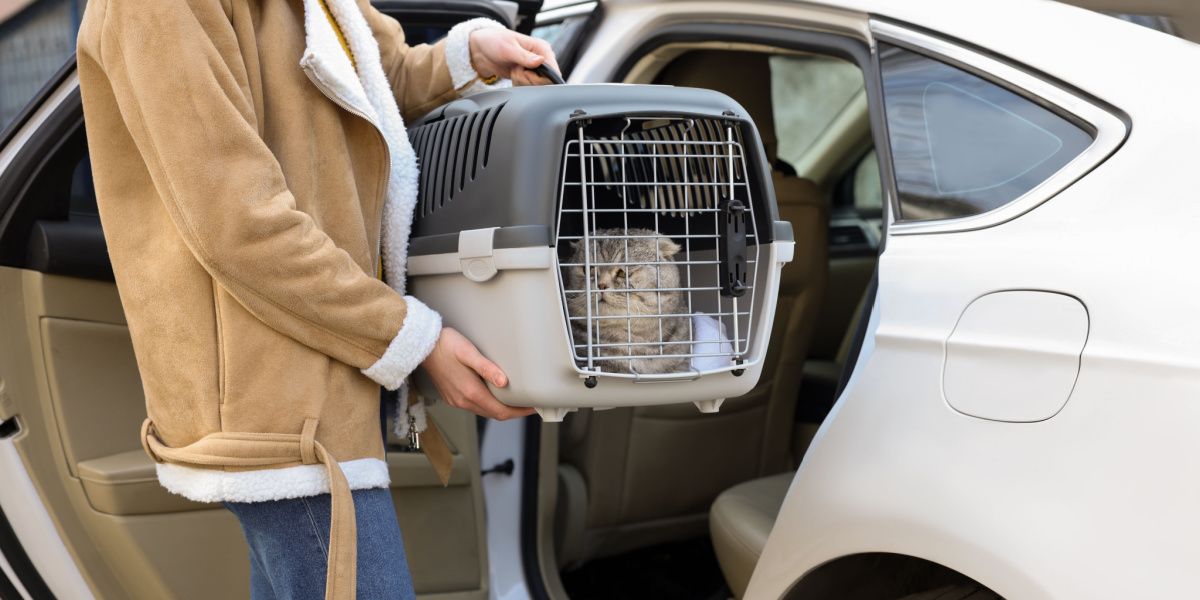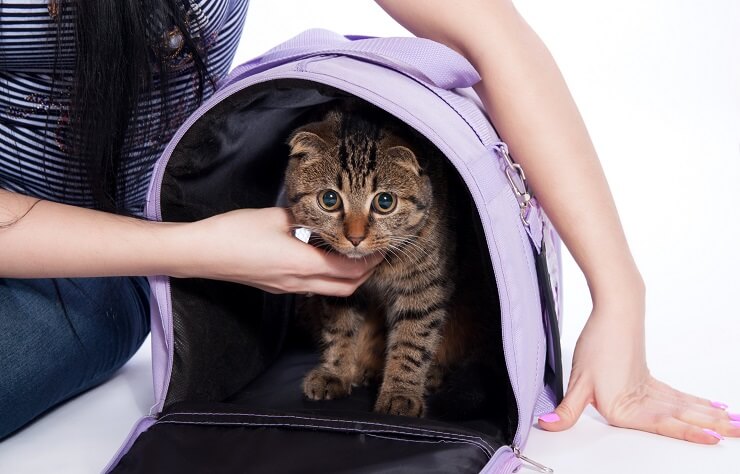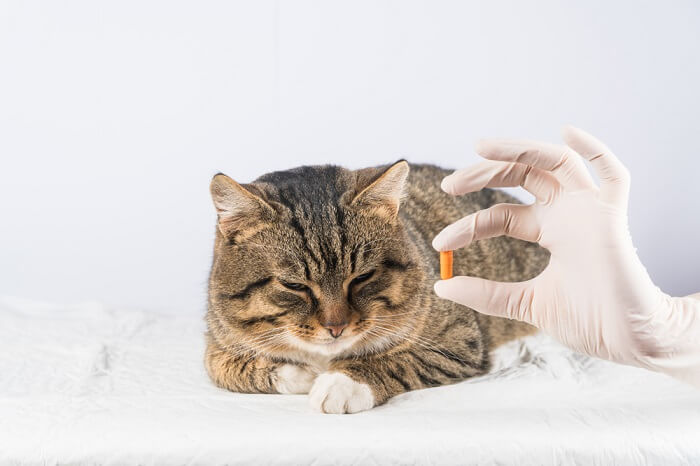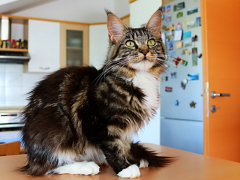
Motion sickness is a common issue in pet cats. While our canine companions tend to “outgrow” motion sickness, it’s not the same for kitties. Kitties, for the most part, don’t tend to go on regular car trips compared to pooches; so they don’t have the same opportunities to learn positive associations with car trips.
What Causes Motion Sickness?
Motion sickness cases in cats tend to relate to the associated anxiety they feel. Since most kitties only travel to the vet, they tend to associate these trips with the stress of their appointment. As a vicious cycle, the heightened stress your cat may feel can increase their motion sickness as soon as they get into their carrier.
What Are the Signs That My Kitty Is Suffering From Motion Sickness?
Cats show a wide range of signs when they’re suffering from motion sickness, not just physical vomiting.
- Vocalization – Stressed cats are often meowing or howling excessively if they’re feeling ill.
- Restless – If your kitty is experiencing motion sickness, they may pace in their carrier or constantly circle and turn
- Drool – A classic sign of nausea, drooling can a physiological response to pain, fear, anxiety, and stress.
- Lethargy – Some cats are quiet and hide when they’re stressed or feeling ill. If your cat is unusually dull or quiet in the car or after their trip, it could be due to feeling nauseated from traveling.
- Vomiting – A common response to nausea is actually vomiting. If your pet has eaten prior to travel, they may be more likely to vomit during or just after the journey. Ideally, your kitty should take trips on an empty stomach.
- Diarrhea – The stress of traveling and feeling nauseated can wreak havoc on your kitty’s intestines. Cats generally don’t do this on purpose (even though we may feel this is an act of revenge for their confinement). Soiling their carrier is actually quite stressful for your kitty, which can further exacerbate their situation.
- Urination – Spraying urine or urinating in their carrier is another indication that your pet is stressed if you’re taking a road trip with them.
How To Prevent Motion Sickness in My Kitty?

Motion sickness is common in cats but can be prevented. Withholding food before travel, using a carrier, desensitization, and bringing special toys are just some of the ways to help your cat feel comfortable during travel.
Control Stress
Traveling is stressful for most kitties, luckily there are a number of products available that can help reduce your cat’s stress levels. Synthetic pheromones and naturally calming herbal products are available that you can apply to blankets, travel carriers, or the car before traveling.
Feliway is a synthetic pheromone that helps to soothe stressed-out kitties. These tend to work best if given for a few days before any stressful event including traveling.
Withhold Food
Kitties with a full tummy are more likely to throw up if they feel nauseated. Once your kitty has access to fresh drinking water, skipping a meal before they take a car trip won’t do them any harm. Your kitty may still vomit, however, this is less likely if they haven’t eaten recently.
Desensitization
You can try to reduce your pet’s stress levels while traveling through desensitization. Ensure that your cat is comfortable in their carrier before starting car training. Initially, you should increase the amount of time your cat spends in the car without traveling anywhere.
Offer your cat some treats or their favorite toy until they’re calm and settled. After this, you can start taking your pet on short car rides, gradually increasing the duration of car travel until they’re more relaxed and not scared in the car anymore. Be prepared, this could take a long time.
Direct Their Carrier Forward
If your pet suffers from true motion-induced sickness, face their carrier forwards so that they can only look out the front. This helps to reduce the risk of vomiting.
Open Window
Opening a window in your car can help circulate some fresh air throughout the vehicle which may help your nauseated kitty. This should only be done once your cat is secure in their travel carrier and cannot make an escape through the window of a moving vehicle.
Nutraceuticals
There are lots of calming, natural remedies available or promoted online. These include valerian, skullcap, and Bach flower (rescue remedy), all of which are safe for cats but should only be used under veterinary advice.
Also Read: 5 Best Calming Aids for Cats
Alpha-casozepine is a casein (milk) derived nutraceutical shown to treat anxiety in pet cats while L-theanine is a naturally occurring amino acid found in tea plants that may also be mildly calming to stressed pets.
You should always consult with your veterinarian before giving your pet any calming products, particularly if they are taking any medication for other health problems.
Medication

There are some anti-nausea medications available that may help your kitty have a more pleasant trip.
Anti-Nausea
Anti-nausea medications may prevent vomiting in your kitty if they’re stressed. These medications only help with the physical signs of motion sickness but don’t help with any underlying anxiety.
Dramamine (dimenhydrinate) is an over-the-counter medication that can help to fight nausea. Cerenia (maropitant) is a prescription-only medication that prevents vomiting in kitties with car sickness. You should discuss dose and frequency with your veterinarian before offering any medication to your pet.
Anti-Anxiety
Prescription medications should only be used in pets that are suffering from extreme stress. Depending on the medication, these may need to be administered up to a couple of weeks prior to travel to ensure efficacy.
One product that often works well to reduce anxiety in cats is acepromazine, it’s a prescription-only product and may make your kitty a little sleepy. Your veterinarian will give you instructions on how best to use the product prescribed for your pet.
Every medication has its side effects. Always consult with a DVM before giving your pet any medications. This is particularly important if your pet is taking any medications.
If your pet shows any of the signs of motion sickness including drooling or crying you can try some behavioral desensitization to acclimatize your cat to travel. Speak to your veterinarian to help soothe your kitty’s stresses.
Frequently Asked Questions
How do I know if my cat gets motion sick?
There are many signs of motion sickness in cats including drooling, excessive vocalization, and tummy upsets.
My cat runs away as soon as I take out the carrier. What can I do?
If your cat associates their carrier with stressful car travel, they may hide as soon as they see you grab it. This already heightens their (and your) stress levels. You should start the behavioral desensitization with your kitty's carrier. Leave it out in the living area for your kitty to explore until they're comfortable.







